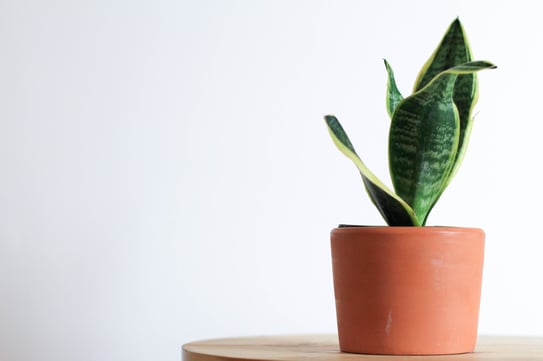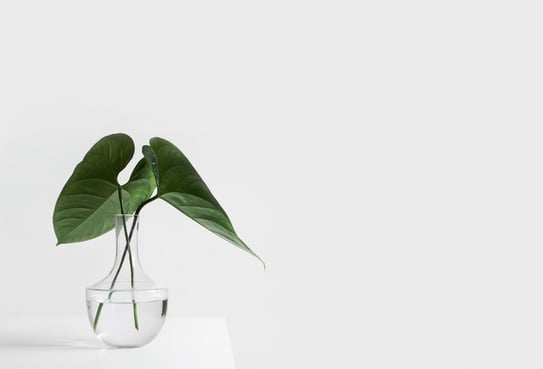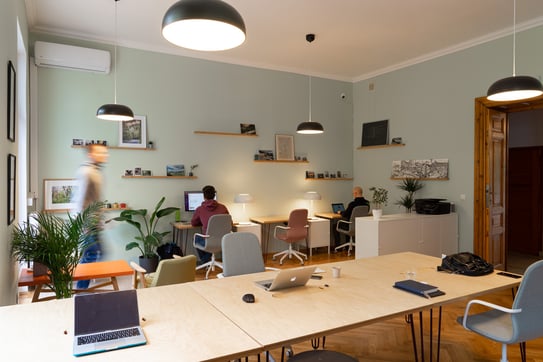Eight benefits of having plants in the office
The right plants can enrich your office space in so many ways, from enhancing its aesthetic appeal to literally improving the air that you breathe.
Here are eight good reasons to invest in office plants and how it can benefit your employees.
Eight benefits of having plants in the office
1. Plants increase productivity
According to a study undertaken by Cardiff University’s School of Psychology, teams perform better when they are surrounded by greenery.
Lead researcher, Marlon Nieuwenhuis said: “Our research suggests that investing in landscaping the office with plants will pay off through an increase in office workers’ quality of life and productivity”. The study found that this simple and inexpensive addition to an office space can boost work output by as much as 15%.
To learn more about productivity in the workplace, check out our article about noise pollution.

Photographer: Alesia Kazantceva | Source: Unsplash
Offices are usually not considered to be the most tranquil of spaces – introducing plants can be a great way to create peace for your team while also helping to improve their concentration.
Stress can have a significant impact on employee health and cause frequent absences. This is why many modern businesses are actively looking to mitigate psychological pressure wherever they can.
Studies show many people find greenery relaxing for a number of reasons. Herbs can also help: lavender is thought to lower anxiety and stress, whilst rosemary can help improve memory.
3. Create a green identity
Environmental awareness is an increasingly important topic, and more sustainably conscious companies will be more successful at attracting and retaining top talent.
Office plants or a rooftop garden can help make the introduction tour of your office a much more pleasant and welcoming experience.

Photographer: Jessie Brown | Source: Unsplash
4. Plants improve oxygen levels
Pollutants from formaldehyde to carbon monoxide can be responsible for a range of health conditions including headaches, fatigue and allergies. A study conducted by NASA identified 50 different species of houseplant that can help improve air quality, some of the highest performing included: rubber plants, Areca palms, lady palms and bamboo palm. The Snake Plant or Mother-in-Law’s Tongue are apparently amongst the most hardy.
If you're interested in creating a healthier space, click here to understand why air quality is so important, and take a look at our use case with the Met Office, where indoor air quality monitoring drove huge savings.

5. Improve workplace aesthetics
The decorative value of healthy flowers and plants is obvious – they can make any space look more welcoming to visitors and the people who occupy it.
Effective uses include arranging greenery to create hideaway areas for people to make calls or work independently and/or planters to provide individuals with more privacy.

6. Plants help to reduce sickness rates of employees
Plants can reduce the rate of sick building syndrome (SBS), a condition linked to indoor spaces thought to be caused by factors such as insufficient ventilation, low humidity and poor lighting. Symptoms include headaches, skin irritation and drowsiness – and can severely impact the productivity levels of a workforce.
Plants can help combat SBS symptoms by removing harmful indoor air pollutants like formaldehyde, benzene and xylene.

Photo by Yolk CoWorking - Krakow on Unsplash
7. Plants help in reducing noise pollution
Noise pollution is often an issue in open plan offices and can be extremely distracting and even impact cognitive functions such as memory and focus.
Including plants and green walls in the office layout helps to reduce indoor noise pollution by absorbing and deflecting sound.

Photo by Tim van der Kuip on Unsplash
8. Plants help to reduce the use of energy
We're always talking about ways use tech to reduce your energy consumption (great for your wallet and the planet), but one often overlooked way of minimizing energy usage is by integrating plants into the indoor environment.
Plants release humidity into a room which helps to regulate temperature, reducing heating and cooling costs.

Photo by Mike Kononov on Unsplash
Having plants in the office can certainly have a range of benefits, even in smaller or older spaces.
If you're looking to improve air quality and reduce energy in your workplace further, our platform can help to provide a healthy and productive work environment for you and your employees.





